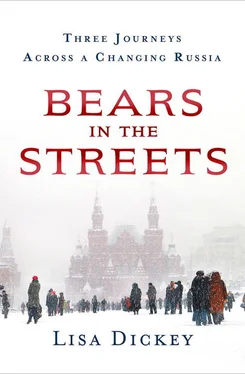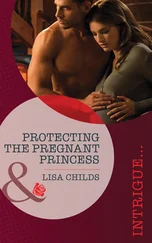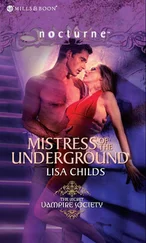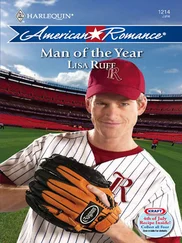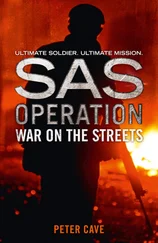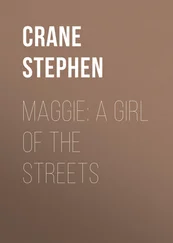As I wandered around the pavilions of VDNKh now, the place was gleaming. I watched tourists take selfies in front of the Lenin statue and skateboarders whiz by in the late autumn sun, and I snacked on a ponchik —a deep-fried, thoroughly addictive Russian donut—and coffee. Later, I popped into the nearby Memorial Museum of Cosmonautics to see Belka and Strelka, the first two dogs to go into orbit and return alive; the dogs, who became folk heroes in Russia, have been stuffed and put on display next to the capsule that took them into space. Hours later, I finally made my way to the metro, and as I boarded a train to head back into the city center, I happened to pick a car that was set up as an art exhibition, with sketches and drawings from the Russian Geographical Society hanging on the wall across from a bench of passengers, many of whom were staring at their phones, taking advantage of the free metro-wide Wi-Fi. Moscow just kept surprising me.
On my last night in the city, Pavlov came to meet me at the hotel. Once again, he brought me a flower—a giant bird-of-paradise, a wildly exotic bloom for November in Russia. I stashed it up in my room, and we headed to the concert, which was in a hall at the House of Artists, not far from the towering Roman-toga statue of Peter the Great. We filed into the auditorium with hundreds of other fans, and for about an hour, we watched and listened as bald, gravelly voiced Pyotr Mamonov thrilled the crowd with his poetic songs, computer-generated backup music, and minimalist guitar in a show that was equal parts performance art and music. Pavlov knew a few other people there, and it was good to see him in his element, talking about music and reminiscing about his Zvuki Mu days.
I left for St. Petersburg the next morning, so that concert was the last time I saw him. And in the end, I wasn’t completely sure what to make of MC Pavlov, circa 2015. I could never figure out how much performing he did, or whether the loss of his Funky Time radio show had been as big a financial blow as I feared. I felt a little obsessed with these questions, though it appeared I might never get an answer to them.
Not long after I returned to Los Angeles, Pavlov sent me an invitation to connect on LinkedIn, of all things. I had to laugh; it was as if he’d looked into my soul and seen my existential angst over his professional life. On his page, he was listed as the founder of Pav-Love Muzik and an instructor at the Rainbow Music Agency, though it wasn’t clear whether he made a living from either of them. Then, a few months after that, he sent me a link to a four-minute video of himself playing and rapping with a keyboardist named Pavel Hotin. And that cleared everything up. Because as I watched Pavlov jamming at a tiny synthesizer, dressed in a bright yellow shirt and pink newsboy cap, bobbing his head joyfully to the beat, I realized I was being ridiculous to worry. Whatever happened, MC Pavlov was still making great music. He was still teaching the people .
TWELVE
St. Petersburg: Five Generations
On November 4, 2015, I arrived in St. Petersburg—the place where, 20 years earlier, this whole adventure had begun with a random e-mail from Gary Matoso. Back then, I was a desperate young would-be writer, unsure if I’d ever find my way into print. Now, fittingly, I was returning to my favorite city in the world, ready to write a book about the experiences that began and were ending here.
St. Petersburg always felt like home. I’d lived here for two and a half years in the mid-nineties, and despite epic winter cold and darkness, the city’s magic had captured me. With its meandering canals, Italianate architecture, and Tsarist-era splendor, there was beauty wherever one’s gaze happened to fall. The city’s tragic history during World War II, when German troops surrounded the city for 872 days, choking off food supplies and starving more than a million people, infused it with a steely survivor’s mentality. St. Petersburg felt heroic, strong, enduring. And one of the things I loved most about it was the sense that history lurked around every corner.
At the end of our 1995 trip, Gary and I decided to try to capture some of that history. A Russian friend of mine named Boris had offered to introduce us to his great-grandmother Maria Mikhailovna, a tiny but sturdy woman of 98 who had vivid memories of growing up in tsarist times. This was an amazing, vanishingly rare opportunity to hear firsthand about pre-Revolutionary Russia, and we jumped at the chance.
We spoke with Maria Mikhailovna, then interviewed her 72-year-old daughter Lia, who’d served in Leningrad during World War II; then Lia’s daughter-in-law Nina, who’d grown up during the space race era; Nina’s son Boris, who’d come of age during the collapse of the Soviet Union; and finally, Maria Mikhailovna’s great-great-grandson from another branch of the family tree, Vanya. At the age of six, little Vanya was poised at the edge of a new century, just as Maria Mikhailovna had been as a child nearly 100 years earlier.
To understand Russia today, one must look at what its people lived through in the twentieth century. This was our attempt to tell the story of that century, through the eyes of one family.
* * *
Maria Mikhailovna Gurevich was born on December 25, 1896, to Russian Jewish parents in the Black Sea town of Feodosiya. “My father was in the working class,” she told me, “and my mother stayed home to take care of the children. We had a big family, but we never went hungry, even though we didn’t have very much money. Mama knew how to take care of us.” Her mother eventually bore seven children; Maria Mikhailovna was the eldest.
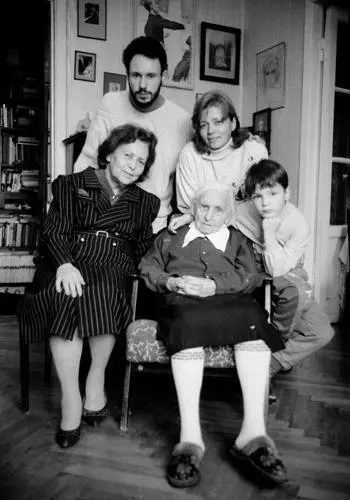
Five generations of a Leningrad/St. Petersburg family: 98-year-old Maria Mikhailovna, WWII veteran Lia, physician Nina, psychology student Boris, and 6-year-old Vanya, 1995 (PHOTO BY GARY MATOSO)
She was eight years old, studying at a grammar school named for Tsar Alexander II, when the first rumblings of revolution began. Labor strikes flared in the faraway capital of St. Petersburg, and on January 22, 1905, Imperial Guards opened fire on an unarmed crowd of protestors, killing and wounding hundreds. News of the “Bloody Sunday” massacre spread quickly, provoking violent protests across Russia. “I remember sitting on the roof of my house in Feodosiya and watching fires burn across the city,” she recalled of that time, which Leon Trotsky later dubbed the “dress rehearsal for the revolution.”
In 1913, the family moved to the Crimean city of Kerch. Maria Mikhailovna was now a pretty, dark-haired young woman of 16, and suitors soon came calling. In 1914, a soldier in the Tsar’s army named Naum Ilyich Schneider proposed with the words, “Let’s get married or not get married, but I’m tired of just coming over for tea.” The couple wed, but their marital bliss was short-lived; Russia had entered World War I, and Naum Ilyich was almost immediately sent to the front to fight.
As Maria Mikhailovna recalled:
We knew he had to go fight, but we thought we’d have a little bit of time together first. He left two days after we married, and I didn’t see him again for almost three years.
He was wounded very badly in the war, hit in the leg with an exploding bullet. One doctor wanted to amputate, but another said it wasn’t necessary. He suffered terribly. But in the end, they didn’t amputate. I remember when I saw him for the first time after he came back. He had recovered in a hospital in Odessa, but was still in very bad shape.
I was only sixteen when we married, just a girl. But when he came back, I was a young woman. When they told me he was coming, I put on a special dress for the occasion, and a new hat, and then rushed over to see him.
Читать дальше
